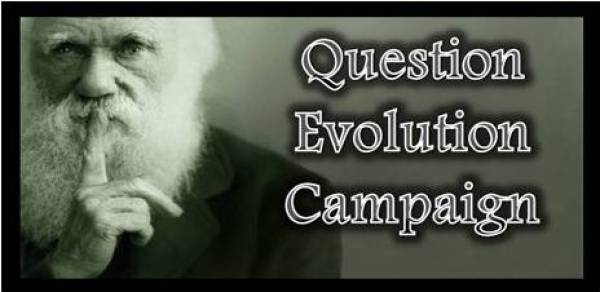Students, please feel free to comment and to share strategies of your own.
Tip # 2: Question the underlying assumptions of any claim about history. Remember that both creation and evolution are historical sciences (as opposed to operational sciences which can be directly observed and repeated in the present). Thus, both make claims about history that are neither observable nor repeatable. A simple question to ask when confronted with claims about things that supposedly happened millions of years ago would be, "How do you know? Were you there?" In reply, of course, the evolution defender will admit that no one was there, but will probably cite an interpretation of some data observed in the present. The creationist can then show how the data also fits nicely into a creationist worldview, reinforcing again the very important point that the evidence doesn't speak for itself but is always interpreted within a framework.
Case Study: The Fossil Record
In many textbooks, the fossil record is presented as solid evidence of evolution, almost as good as having a written record. We weren't there to observe the fossilized creatures, but at least we can study their remains. It is claimed that there is a clear progression of fossils so that it is easy to trace the transitions from early, simple forms to later, advanced ones. In reality, though, the fossils found are of fully formed, distinct creatures. In the words of the late Ernst Mayer (a passionate evolutionist):
Given the fact of evolution, one would expect the fossils to document a gradual, steady change from ancestral forms to the descendants. But this is not what the paleontologist finds. Instead, he or she finds gaps in just about every phyletic series. New types often appear quite suddenly...This raises a puzzling question: Why does the fossil record fail to reflect the gradual change one would expect from evolution? - Mayr, Ernst, What Evolution Is, Basic Books: NY, 2001, p. 14.In class discussions about the fossil record, it is often useful to point to the charts and graphs found in the textbooks of the evolutionary tree of life and note that only the "tips" - the final products - are shown. But what about the branches? Why are no pictures shown of the creatures that are represented there? This is a good way to use the textbook itself to show how much of the fossil "evidence for evolution" doesn't even exist. Of course, the fact that creatures appear in the fossil record fully formed and that there are only a handful of debatable "missing links" in all the millions of fossils found is much more compatible with the creationist view.
Extra Credit: Remember to ask questions cheerfully and politely. It is sometimes effective to phrase questions in the third person, as if you have read or heard of an interesting observation by someone else and want to hear the teacher's take on it. This can keep the discussion from feeling like a personal attack (on either the teacher or you). For example, "Creationists would claim that ..." or "I was reading that..." or "But a creationist would answer that by saying..." or "But then, wouldn't that mean..." Teachers usually like it when a student engages with the material being taught and questions it thoughtfully, so try to demonstrate with your questions that you have not only studied the relevant material but have also taken it upon yourself to dig a bit deeper.
See also:
They are teaching lies to our kids!
The non-evolution of the horse


very helpful, Beth - your work on this blog is an asset to the internet, and to this blog - going to share it with others! Thank you!
ReplyDelete